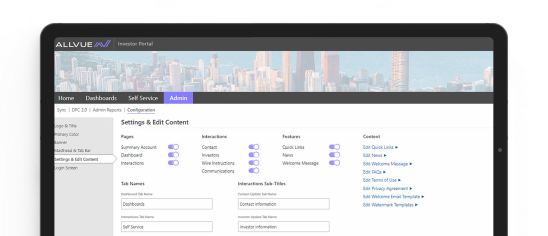
By: Allvue Team
June 23, 2022
SuperReturn International, the private equity and venture capital industry’s largest annual conference, was held in Berlin this month, attracting more than 1,000 LPs, 1,300 GPs, as well as hundreds of service providers. The multiday event, which took place June 14-17, included hours of keynotes and panel sessions led by the likes of Thoma Bravo, Ares Management, KKR, and more.
Allvue was in attendance at this year’s SuperReturn to interact with industry peers and to hear from some of the private capital’s biggest players. Here are our top four takeaways from the SuperReturn International 2022:
1. ESG comes into sharper focus
When it comes to ESG, market participants are no longer asking the question of whether ESG will stay relevant or whether it’s a passing fad. They’re instead asking how to best create value and prop up new processes around these accepted ESG ideals. As a result, the industry is grappling with an advancing war for ESG talent.
While it’s accepted that ESG is here to stay, LPs are still watching closely as its role further develops. As pointed out by one panelist, LPs are still suspicious of greenwashing, feeling out what “good” and “bad” ESG looks like, and it shows in their ESG due diligence efforts. This is made more challenging by the fact that different regions remain on different regulatory pages. While the U.S. has now made formalized rule proposals surrounding ESG, its takes more of a defense approach compared to Europe’s offense approach.
As the details of how ESG is handled continue to shake out, GPs will certainly get points from their LPs by being up forthcoming about how their ESG efforts – from reporting to benchmarking to responsible investment performance – are coming along, no matter if it’s good or bad news. After all, transparency is inherent to the idea of ESG.
2. Private equity is becoming democratized
Despite private investments historically being associated with the largest of institutions, more family offices and even high-net-worth individuals are increasingly gaining access to private investments with far less capital than traditional LPs.
GPs are happy to expand their investor base and make these illiquid assets more accessible, while these newer investors are happy to stomach the illiquidity in exchange for a stake in the relative stability of private markets when compared to public markets.
While the industry is interested in discussing how retail investors gain access to private capital, especially through retirement accounts, this as a reality is still several years off.
3. LPs’ trust in private capital has never been stronger
Even when it comes to intense volatility across the entire ecosystem – galvanized by geopolitical strife, inflation, continued supply chain struggles, and other factors – LPs trust to find returns in alternatives, even if exits do slow for some time.
Today’s LPs have come around to the idea that they can sit tight in their private investments through volatility and come out even stronger on the other side.
This wasn’t always the case, especially in 2008, when the market downturn led to a fire sale within the private markets as investors rushed for additional liquidity. But we heard GPs at SuperReturn describing their investors as having a more calm and collected attitude toward the asset class now, as compared to trying times in the past.
4. The private markets can be a port in a macroeconomic storm
As noted, the investing space is up against an array of challenges, and the public markets are reacting to those. But this volatility doesn’t exist to the same degree within the private markets, at least partially due to the slower-moving nature of alternative investments.
Since data is offered up on a far less frequent basis than the minute-to-minute nature of the public markets, for many LPs it makes more sense to buy, hold, and wait out current conditions, rather than get spooked by a certain industry’s volatility in the public markets. Exits may slow for a period under this macroeconomic stress, but it will also make way for ideal new entry points.
How Allvue prepares LPs and GPs for a bright private markets future
All of these themes touched on at SuperReturn International merge together to require better data collection and analysis for LPs and GPs who want to access outsized returns in private capital. Proper access to private investment data acts as a compass, helping them to understand the right way forward during this time of change and volatility.
Allvue believes that collecting and extracting insights from your portfolio data – whether you’re a manager or investor – shouldn’t be a code to crack. Our product suites offer repeatable, customizable processes for capturing all necessary private investment data and pulling value and context out of the complexity.
Want to see more on how Allvue works? Reach out for a demo today.

